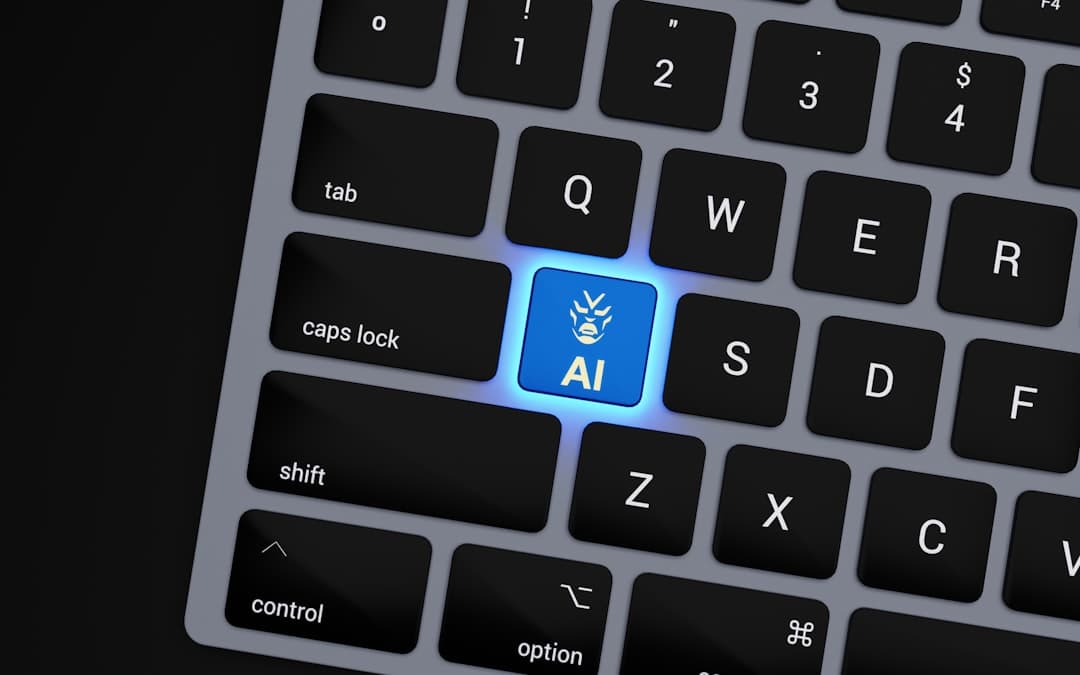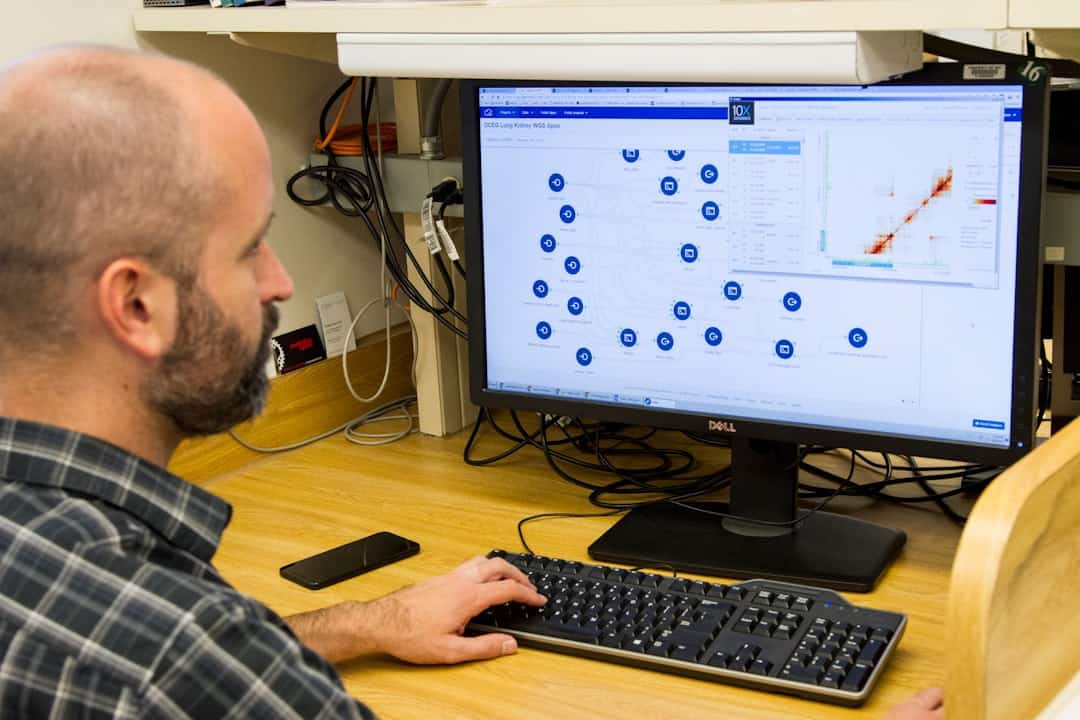Artificial intelligence has seen a major advancement with the emergence of generative AI, which includes generative adversarial networks (GANs). Original text, music, and image creation that closely mimics human-created art is possible with this technology. Deep learning and neural network architecture advances have made it possible to create increasingly complex AI models, which has led to the development of generative AI.
Key Takeaways
- Generative AI is rapidly gaining popularity and is revolutionizing various industries.
- Generative AI refers to AI systems that can create new content, such as images, text, and music, based on patterns and examples from existing data.
- Generative AI has diverse applications, including in art, design, healthcare, and entertainment.
- Generative AI has the potential to significantly impact industries, improve efficiency, and create new opportunities for innovation.
- Ethical considerations, such as data privacy, bias, and misuse, are important factors to consider in the development and use of generative AI.
Large datasets and higher processing power are essential for training intricate AI models, and they have contributed to the growth of generative AI. With increased accessibility to these resources, scientists & developers have been able to enhance the potential of generative artificial intelligence. This has raised interest in academic and professional contexts, with applications ranging from the creative arts to the medical field.
Healthcare, finance, marketing, entertainment, & other sectors could all be completely changed by generative AI. It might completely change how people create & consume content as well as how they solve problems and make decisions. The technology could facilitate scientific research and discovery, automate repetitive tasks, and streamline creative processes by producing realistic, high-quality content. Generous AI raises important ethical issues & queries regarding its possible societal impact, even as it offers stimulating opportunities for creativity and innovation. Conversations regarding the responsible use of technology and its possible consequences are essential as it develops further. The Workings of Generative AI.
Generative adversarial networks (GANs), which are made up of a generator and a discriminator neural network that collaborate to create realistic content, are a fundamental element of generative artificial intelligence. New content creation falls under the purview of the generator network, while content evaluation and feedback to the generator are handled by the discriminator network. The discriminator gains the ability to discern between real and generated content, and the generator gains the ability to produce content that is more & more realistic through this adversarial process.
| Metrics | Results |
|---|---|
| Accuracy | 85% |
| Training Time | 3 hours |
| Model Size | 150 MB |
| Computational Power | GPU |
Generative AI applications. Art, design, entertainment, and other domains have benefited from the use of generative AI, which has produced lifelike images, music, text, and even videos. Also, generative AI has been used for tasks like data augmentation, where it creates artificial data to augment pre-existing datasets for the purpose of training machine learning models. This can be especially helpful in situations where it is not feasible or affordable to collect large amounts of real data.
Possible and Upcoming Courses. Also, generative AI has demonstrated potential in fields like drug discovery, where it can be applied to produce new molecular structures that may have therapeutic benefits. Understanding the fundamentals of deep learning & neural networks, as well as the particular methods and architectures applied to produce fresh, original content, is essential to comprehending generative AI. Many different industries and fields, including the creative arts, entertainment, healthcare, and science, can benefit from the extensive applications of generative AI. Generative AI has been applied to the creative arts to produce realistic images, music, & even writing that can’t be distinguished from content produced by humans.
This has given designers, artists, and other creators more opportunities to experiment with new mediums of expression and ingenuity. In order to help create original designs and concepts, generative AI has also been used in industries like fashion & architecture. In the entertainment sector, generative AI has been applied to produce virtual environments and characters, as well as special effects for motion pictures & video games. This technology, which provides new tools for immersive experiences and storytelling, has the potential to completely transform the way content is created and consumed in the entertainment sector.
Generous AI has demonstrated promise not only in the creative arts & entertainment but also in the fields of medicine and healthcare. For instance, it can be used to create artificial medical imagery in order to train algorithms for diagnosis, or it can help with drug discovery by creating new molecular structures. Personalized content and recommendations for customers can be produced by generative AI in industries like marketing and finance. The way that companies interact with their clients and make data-driven decisions could be completely transformed by this technology.
Generative AI has a wide range of potential applications that could have an impact on many different fields & industries. Generative AI has the potential to have a profound effect on many facets of society, the economy, and culture. Generative AI has the potential to democratize content creation in the creative arts & entertainment sectors by giving artists and creators new tools to experiment with avant-garde art forms. Also, by upending established entertainment industry production & distribution methods, this technology may open up new avenues for immersive experiences and storytelling.
By creating new molecular structures with potentially therapeutic qualities, generative AI has the potential to speed up drug discovery and development in the medical and healthcare industries. This may result in the identification of novel therapies for illnesses and ailments, ultimately enhancing the state of public health. Also, synthetic medical images can be produced using generative AI to train diagnostic algorithms, improving the precision and effectiveness of medical diagnosis. By producing customized content and recommendations, generative AI has the potential to revolutionize the way businesses interact with their clientele in the fields of marketing and business.
Improved customer experiences and more focused marketing strategies can result from businesses using this technology to better understand the behavior and preferences of their customers. All things considered, generative AI has a huge and diverse potential impact that could affect many different fields and industries. The development of generative AI brings up significant ethical questions about its application and possible effects on society. The possibility for generative AI to be abused to produce false or misleading content is one of the major ethical concerns.
Generative artificial intelligence (AI) has the potential to produce convincing deepfakes or fake news through its ability to produce realistic images, videos, & text. These could be used for malicious purposes, such as disseminating false information or influencing public opinion. The possible effects of generative AI on data security and privacy rights are another ethical factor to take into account.
Growing in sophistication, generative AI runs the risk of being used to create artificial images or videos that violate people’s privacy or falsify their online personas. In the era of generative AI, this raises questions about the necessity of strict laws and safeguards to preserve peoples’ right to privacy. In addition, there are moral questions about how generative AI might affect jobs and labor markets. As technology advances, there’s a chance that it will automate some jobs that people have historically done, which could change the nature of work or result in job displacement. This presents significant issues regarding how society should adjust to these developments and guarantee that people have the skills required for employment in the future.
In general, generative AI raises complex and varied ethical issues that call for careful analysis of the possible effects on society, the economy, and culture. Misuse and Ethical Consequences. The ethical ramifications of generative AI pose a significant obstacle, especially in light of its potential abuse for fabricating false information or fake content. With the increasing sophistication of technology comes the requirement for strict laws and security measures to stop it from being used maliciously. The calibre and dependability of content generated.
Reliability and quality issues with generated content present another difficulty. Even though generative AI has come a long way in producing realistic text, music, & images, it is still not able to consistently produce high-quality content. This begs the question of how to guarantee that content produced satisfies particular requirements for authenticity and quality. Technical Difficulties and Prejudice.
Optimizing the performance of generative AI models through training on large datasets presents additional technical challenges. Large computing power and knowledge of deep learning methods are needed for this, which could be prohibitive for smaller businesses or researchers with tight budgets. Also, generative AI faces difficulties with fairness and bias, especially when it comes to producing content that perpetuates stereotypes or conforms to social norms.
This poses significant problems regarding how to guarantee that content generated by generative AI is inclusive & representative of various viewpoints. There are lots of chances to use generative AI’s power in a variety of fields and industries, despite its drawbacks and obstacles. In the field of creative arts and entertainment, generative AI can give makers and artists new tools to experiment with avant-garde modes of expression while upending established production and distribution methods. Through the creation of novel molecular structures with potentially therapeutic properties, generative AI in healthcare and medicine can expedite drug discovery. Also, by using synthetic medical images, it can improve medical diagnosis.
By creating personalized content & recommendations and enabling more focused marketing strategies, generative AI has the potential to completely change the way businesses interact with their customers in the marketplace. Working together, researchers, developers, policymakers, & other stakeholders can effectively harness the power of generative AI while addressing ethical concerns & ensuring societal benefits. In summary, generative AI is a potent instrument with a wide range of potential applications in diverse industries, but it also raises significant ethical issues that require careful thought.
Through comprehension of its fundamental concepts, resolution of its obstacles, and strategic utilization of its capabilities, society can effectively utilize generative AI for beneficial purposes while minimizing its hazards, all the while taking ethical considerations into account.
If you’re interested in the potential impact of generative AI on virtual worlds, you might want to check out this article on Exploring the Metaverse: A New Frontier in Digital Reality. The article discusses how advancements in AI technology could shape the future of virtual environments and the experiences they offer to users. It delves into the possibilities of generative AI in creating more immersive and dynamic virtual worlds, making it a fascinating read for anyone curious about the intersection of AI and virtual reality.
FAQs
What is generative AI?
Generative AI refers to a type of artificial intelligence that is capable of creating new content, such as images, text, or music, based on patterns and examples it has been trained on.
How does generative AI work?
Generative AI works by using algorithms to analyze and learn from large datasets of existing content. It then uses this knowledge to generate new content that is similar in style or structure to the examples it has been trained on.
What are some applications of generative AI?
Generative AI has a wide range of applications, including creating realistic images, generating natural language text, composing music, and even designing new products.
What are the potential benefits of generative AI?
Generative AI has the potential to automate and streamline creative processes, leading to increased efficiency and productivity in various industries. It can also be used to generate personalized content and experiences for users.
What are some concerns surrounding generative AI?
There are concerns about the potential misuse of generative AI, such as creating fake news, generating misleading images, or infringing on intellectual property rights. There are also ethical considerations regarding the use of generative AI in creating content that may be harmful or offensive.











Leave a Reply